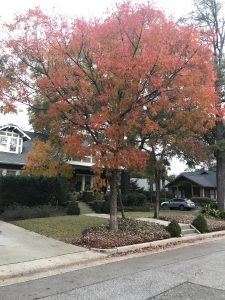A bulkhead is a retaining wall, such as a bulkhead within a ship or a watershed retaining wall. It may also be used in mines to contain flooding.
Coastal bulkheads are most often referred to as seawalls, bulkheading, or riprap revetments. These manmade structures are constructed along shorelines with the purpose of controlling beach erosion. Construction materials commonly used include wood pilings, commercially developed vinyl products, large boulders stacked to form a wall, or a seawall built of concrete or another hard substance.
https://en.wikipedia.org/wiki/Bulkhead_(barrier)
Most marine construction structures are built to protect or prevent damage to shoreline or waterfront property. The four most common marine construction structures are:
- Retaining Walls
- Bulkheads
- Seawalls
- Revetments
What is the Difference? Retaining Walls and Bulkheads
This post will focus on the primary difference between retaining walls and bulkheads. To learn more about the difference between seawalls and revetments, please continue on to the next post.
Retaining Walls
Retaining walls are often considered the most basic out of these four common types of marine construction structures. Wikipedia defines a retaining wall as a relatively rigid wall used to support soil mass laterally so that the soil can be retained at different levels on the two sides. The primary function of a retaining wall is to prevent land movement, such as sliding.
Bulkheads
A bulkhead is very similar to a retaining wall as they have the same functionality. The primary difference between the two comes down to what element is being retained on each side of the wall. A retaining wall has soil (earth) on both sides of the wall, whereas a bulkhead retains earth on one side of the wall and has water on the other side.
Why Build a Retaining Wall or a Bulkhead?
Both retaining walls and bulkheads are a common form of engineered stabilization that prevent land movement, and are often used in areas that have undesirable sloped terrain. Building one or both allows sloped land to be shaped in a way that better suits it for specific uses.
Stabilize Your Property with a Retaining Wall, Bulkhead, or Both
Since every property is unique, the specific factors of your property will determine if you should build a retaining wall, a bulkhead, or a combination of both to provide the best form of stabilization for your needs.
Sheet Pile Wall Construction
Sheet pile walls are retaining walls constructed to retain earth, water or any other filling materials. These walls are thinner in section compared to masonry walls. Sheet pile walls are generally used for following:
- Water front structures, i.e. in building wharfs, quays and piers.
- Building diversion dams, such as cofferdams
- River bank protection
- Retaining the sides of cuts made in earth
Sheet pile walls can be of timber, reinforced concrete or steel.
Steel sheet piles are most commonly used. Steel sheet piles possess several advantages over other piles. They are:
- Steel sheet piles are resistant to high driving stresses
- They are lighter in section
- They can be used several times
- They can be used either below or above water and have long life span
- Suitable joints can be provided to have a continuous wall
- The pile length can be increased either by welding or bolting.

Reinforced concrete sheet piles are precast concrete members, usually with a tongue and groove joints. Typical section of the RCC sheet pile is shown in figure below. These piles are relatively heavy and bulky. They displace large volumes of solid during driving. This large volume displacement of soil tends to increase the driving resistance. Due to this reason, suitable reinforcement is provided considering large driving stresses.
Sheet piles are often connected together in pairs and installed using one of three methods:
- Vibration: this is the most common method. The first sheet pile of the wall is installed into the ground. A vibratory hammer with clamp is attached to the top of the second sheet pile, which is then interlocked with the first sheet pile, and the sheet pile is vibrated into the ground.
- Pressing: sheet piles can also be pressed into the ground when noise hindrance and vibration would otherwise cause problems. This, however, takes longer and is expensive. The sheet piles are pressed into the ground by a hydraulic machine.
- Excavation: sheet piles can also be excavated into the soil. A long trench is excavated which is then filled with cement bentonite (a thin concrete slurry) to prevent the walls from collapsing. The sheet piles are then installed in the trench and the cement bentonite is allowed to set
Steel sheet piling is the most common because of several advantages over other materials:
- Provides high resistance to driving stresses.
- Light weight
- Can be reused on several projects.
- Long service life above or below water with modest protection.
- Easy to adapt the pile length by either welding or bolting
- Joints are less apt to deform during driving.
Sheet pile wall disadvantages are:
- Sections can rarely be used as part of the permanent structure.
- Installation of sheet piles is difficult in soils with boulders or cobbles. In such cases, the desired wall depths may not be reached.
- Excavation shapes are dictated by the sheet pile section and interlocking elements.
- Sheet pile driving may cause neighborhood distrurbace
- Settlements in adjacent properties may take place due to installation vibrations

